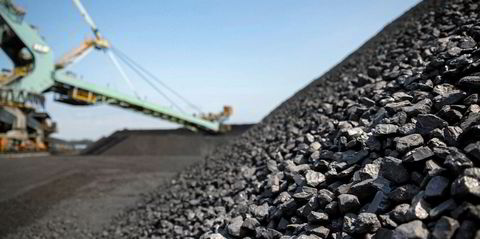A new earnings season is dawning and with it comes hope that there will be something — anything — that might jolt investor interest and appetite in New York-listed shipping shares, which has been at a low ebb.
Containership owners have good things to talk about. Tanker owners won’t be able to boast about the usual strong fourth quarter. And dry operators are a mixed bag that may turn on vessel positioning and strategy.
But it’s the LNG part of the gas sector that may hold the most interesting upcoming earnings call as Golar LNG talks about next steps in its Hygo Energy Transition initial public offering plans.
Those are the high-level views from Jefferies lead shipping analyst Randy Giveans as the 30 US-listed owners under his coverage begin to trot out their earnings, following yet another loss-making week for the group.
One of the season’s most interesting quarterly reports and earnings calls will come out of the gate quickly, with Scorpio Bulkers giving an update Tuesday on the pace of its transition into the wind turbine installation vessel (WTIV) market.
As TradeWinds reported last week, Scorpio may no longer be an owner of bulkers by the end of March as it continues its fleet disposition at a rapid clip, securing funds for the wind project.
Jefferies will be watching “the status of the dry bulk to WTIV transition, and any updates on the timing of vessel sales and WTIV orders and construction,” Giveans told TradeWinds.
The other big reveal will be expected from Golar, which has not yet set a firm date for its third-quarter earnings release.
Golar’s Hygo joint venture has been fighting to restore its reputation after its chief executive stepped down and later resigned in the wake of bribery allegations by the Brazilian authorities.
The fallout led to the company, which was formerly known as Golar Power, postponing a planned New York IPO on the eve of pricing, with uncertainty over whether and how quickly it might be revived.
“It’s arguably the most anticipated earnings call – they will certainly have lots to discuss,” Giveans said.
By sector, this is usually the time when tanker owners unveil relatively weak earnings for the third quarter but quickly try to shift the focus to fourth-quarter rates guidance: typically much stronger in a building winter market.
But the dynamics are different this year. Tanker owners had their party over two months in the year’s first half, with record rates stemming from a Saudi-led oil price war and a floating-storage bonanza.
That has transitioned to inventory destocking and weak rates expected to stretch through the year’s last quarter, and perhaps beyond.
“Actual third-quarter earnings will be pretty good, primarily driven by a strong finish to the second quarter and better than expected guidances reported this summer,” Giveans said.
“[But] fourth-quarter guidance will likely be much weaker. We could see some surprises, as actual bookings have materially outperformed the very low rates seen in recent broker reports.”
Giveans said investors already have figured out there won’t be a strong winter market.
“It’s already priced in — just look at the [weak share] prices to NAV,” he said, adding that expectations are so low that there could be some upside.

"I think the more important conversation will be around 2021 and the drivers of a rate recovery, coupled with current cash-on-hand and balance sheet strength to provide a runway until the market improves meaningfully.”
Dry bulk rates have been more of a recovery story, but not consistently.
“Capesize rates have been on a roller coaster since June, so we could see a wide range of third-quarter rates as well as rates to date in the fourth, with each company’s performance tied to positioning, chartering, and vessel availability," Giveans said.
Key points to market outlook will be Chinese iron ore demand, production by Brazilian miner Vale, the soybean trade and an uncertain coal sector, he said.
Meanwhile, it’s containership owners who can approach investors with a smile.
“They are arguably the strongest shipping sub-sector for the third quarter into the fourth. Management teams will have a lot to say about the V-shaped recovery we’ve seen in rates,” Giveans said, adding that multi-year highs in short term rates have led to improved charter hire over one-year to three-year deals.
“It will be interesting to see how long each company expects the elevated rates to last, and how they’re taking advantage of the current market strength,” he said.
The gas trade provides reason for hope in both sectors, with LNG players able to talk up a recent surge in rates after a long slump, while LPG will focus on the opening and ramp-up of new export facilities.
With all that to come, shipping stocks aren’t exactly sprinting into the fray. Shares lost an average 2.2% last week with 19 of 30 listings falling back.
Tankers struggled the most with an average 6% drop on further deterioration in VLCC rates. The only gainers were LNG owners at 2% and dry bulk at 1%.







